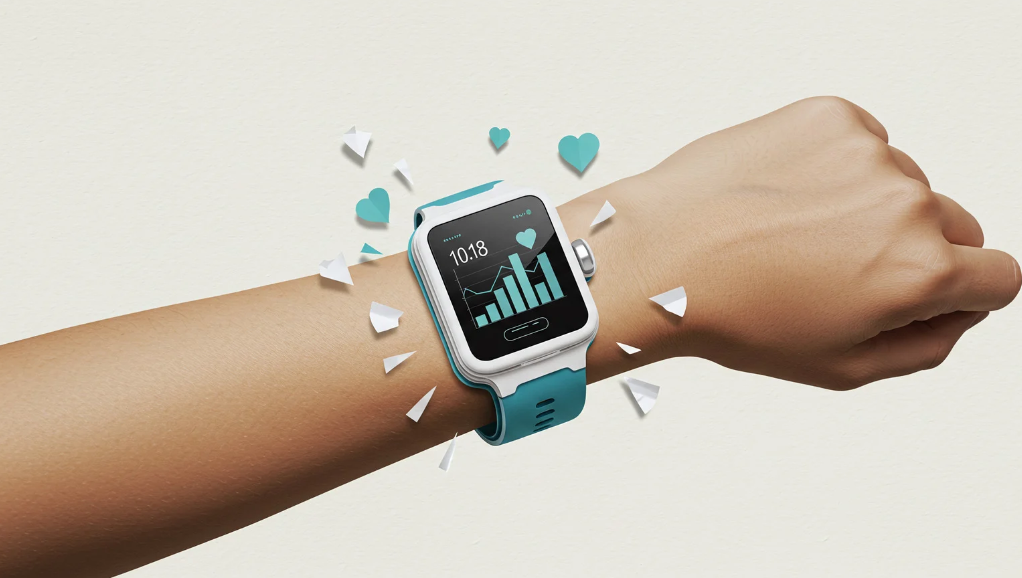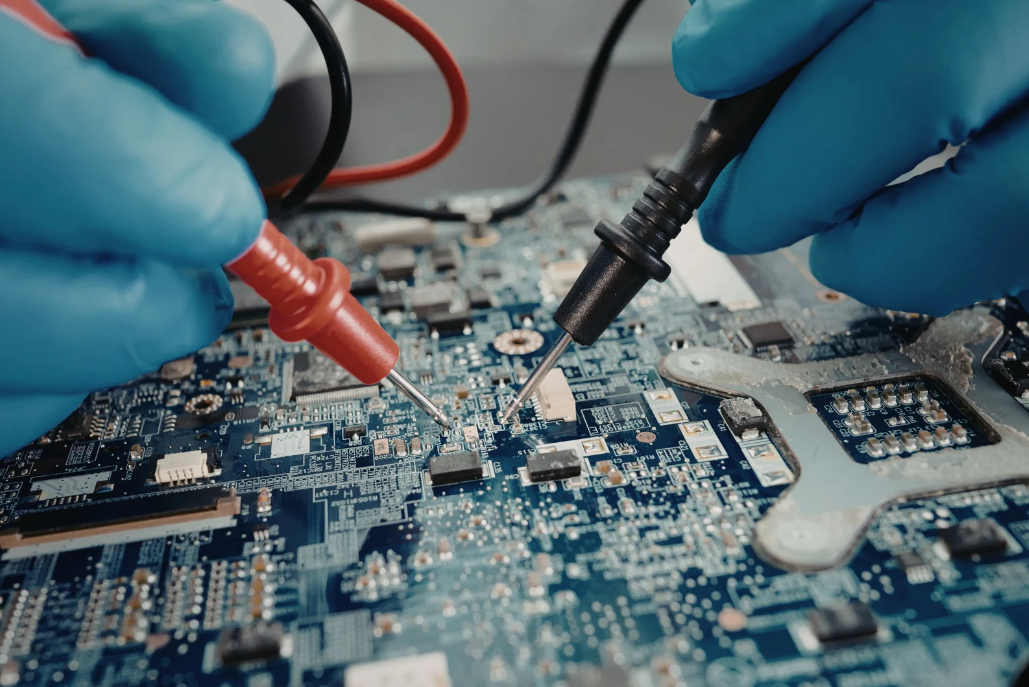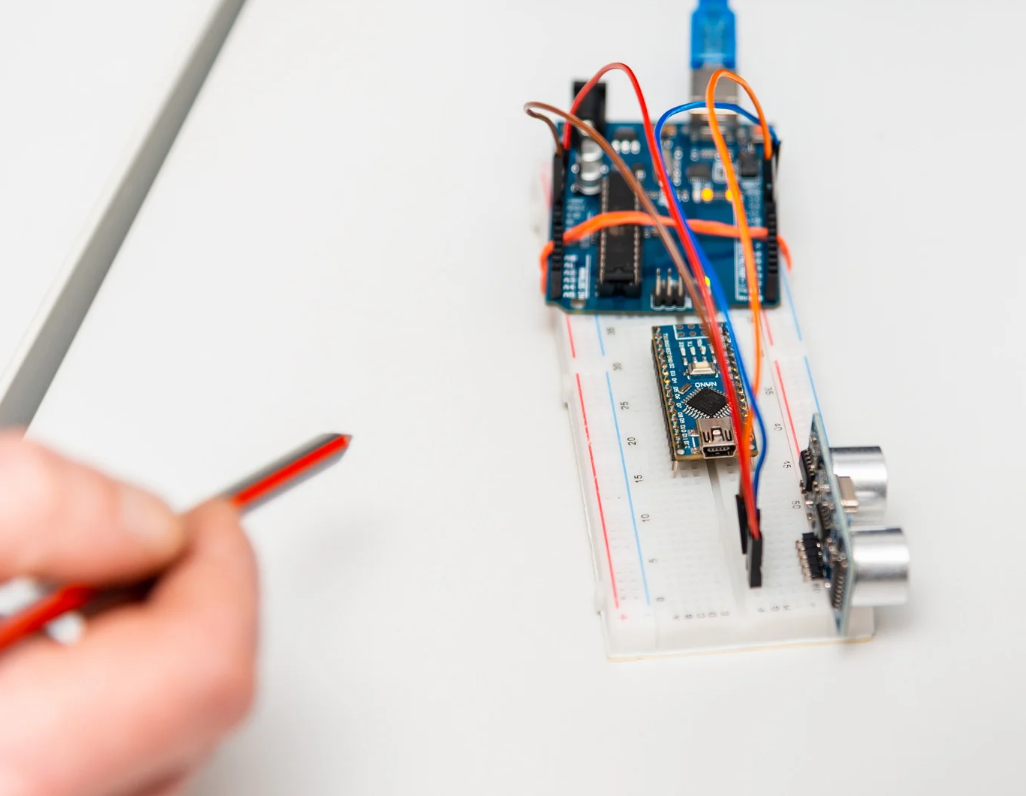Definition and Core Working Principles
Okay, so what is a piezoelectric actuator? Basically, it’s a device that uses special materials to turn electricity into movement. Think of it like a tiny, super-precise muscle. The core idea is the inverse piezoelectric effect, which we’ll get into in a sec.
- They’re used in all sorts of things where you need really, really accurate movements.
- The material actually changes shape when you apply an electric field.
- This shape change is what creates the motion.
The Inverse Piezoelectric Effect Explained
So, the piezoelectric effect is when you squeeze certain materials, they generate electricity. The inverse piezoelectric effect is the opposite: you zap the material with electricity, and it physically deforms. It’s kind of wild when you think about it. The amount it deforms is super small, but it’s controllable and precise. This is what makes piezo actuators so useful.
It’s all about the crystal structure of the material. When an electric field is applied, the positive and negative charges inside shift, causing the whole thing to stretch or shrink a tiny bit. This tiny bit adds up when you stack a bunch of these layers together.
Historical Development of Piezoelectric Materials
Believe it or not, this stuff has been around for a while. The Curie brothers (yes, those Curies) discovered piezoelectricity way back in the 1880s. At first, it was just a scientific curiosity. But over time, people figured out how to make better materials and use them in practical devices. Now we have all sorts of piezoelectric materials, from crystals to ceramics, each with its own strengths and weaknesses. The development of new materials is ongoing, with researchers constantly trying to find stuff that’s more efficient, more stable, and can handle higher temperatures. Here’s a quick look at some milestones:
| Year | Development |
| 1880 | Discovery of piezoelectricity in quartz |
| 1920s | First practical applications in sonar |
| 1950s | Development of piezoelectric ceramics (PZT) |
| Today | Ongoing research into new materials |
Advantages and Limitations of Piezoelectric Actuators
Key Benefits in Precision Control
Piezoelectric actuators really shine when you need things done with extreme accuracy. Their ability to make tiny, controlled movements is unmatched by many other types of actuators. Think of it like this: you can tell it to move a micrometer, and it will actually move a micrometer. They also react super fast, which is great for applications where timing is important. Plus, they don’t use a lot of power, and they’re usually pretty small, so they can fit into tight spaces. Here’s a quick rundown:
- High resolution: Movements down to nanometers are possible.
- Rapid response: They can switch states in microseconds.
- Low power consumption: Efficient use of energy.
Inherent Constraints and Challenges
Okay, so they’re not perfect. The biggest issue is that they don’t move very far. You get precision, but only over a very short range. They also need high voltage to work, which can be a pain to deal with. And, they can be sensitive to temperature and humidity, which can mess with their performance. Finally, something called hysteresis and creep can affect their accuracy over time. You might need to use some fancy control systems to compensate for that. Here’s a summary:
- Limited displacement range
- High voltage requirements
- Sensitivity to environmental factors
Piezoelectric actuators are great for precision, but you need to be aware of their limitations. They’re not a one-size-fits-all solution, and you might need to design your system carefully to get the most out of them.

Comparing Piezoelectric Actuators to Traditional Actuators
So, how do these compare to the actuators we’re used to? Well, traditional actuators, like electric motors or hydraulic cylinders, can move much farther and handle bigger loads. But they’re not nearly as precise or fast. Piezoelectric actuators are like the sprinters of the actuator world – quick and precise, but not built for long distances. Traditional actuators are more like marathon runners – they can go the distance, but they’re not going to win any speed races. The choice really depends on what you need the actuator to do. If you need to compare piezo discs to other actuators, consider the application’s requirements first.
Here’s a table to illustrate the differences:
| Feature | Piezoelectric Actuators | Traditional Actuators |
| Precision | Very High | Low to Medium |
| Displacement | Limited | Large |
| Response Time | Very Fast | Slow to Medium |
| Power Consumption | Low | Medium to High |
| Size | Small | Large |
Applications of Piezoelectric Actuators in Robotics and Automation
Robotics and automation are getting a serious upgrade thanks to piezoelectric actuators. I mean, who would have thought that crystals could be so useful in making robots move with such precision? It’s kind of mind-blowing when you think about it. These actuators are showing up everywhere, from factories to research labs, making things more efficient and accurate. Let’s take a look at some specific ways they’re being used.
Precision Motion Control in Manufacturing
Piezoelectric actuators are really good at providing precise motion control, which is super important in manufacturing. Think about assembling tiny electronic components or creating intricate parts for medical devices. You can’t just slap things together and hope for the best. You need accuracy, and that’s where these actuators shine. They allow for movements with sub-micrometer precision, which is way beyond what traditional motors can do. This leads to less waste, better quality products, and faster production times. It’s a win-win-win situation, really.
Enhancing Robotic Grippers and Positioning Systems
Robotic grippers are getting a major boost from piezoelectric actuators. Instead of clunky, imprecise movements, these grippers can now handle delicate objects with care. Imagine a robot picking up an egg without cracking it – that’s the kind of control we’re talking about. And it’s not just about being gentle; it’s also about speed. Piezoelectric actuators can respond quickly, allowing robots to perform tasks faster and more efficiently. Plus, these actuators are small and lightweight, which means they can be integrated into a variety of robotic systems without adding a lot of bulk. robotic grippers are becoming more versatile and capable thanks to this technology.

Role in High-Accuracy Assembly
High-accuracy assembly is another area where piezoelectric actuators are making a big difference. Whether it’s assembling smartphones, watches, or other complex devices, precision is key. These actuators allow for the precise positioning of components, ensuring that everything fits together perfectly. This not only improves the quality of the final product but also reduces the risk of defects and failures. It’s like having a tiny, super-accurate robot helping you put things together. The use of piezoelectric actuators in assembly lines is becoming more common as manufacturers strive for greater efficiency and reliability.
Piezoelectric actuators are transforming robotics and automation by providing unparalleled precision and control. Their ability to deliver fast, accurate movements in a compact size makes them ideal for a wide range of applications. As technology advances, we can expect to see even more innovative uses for these actuators in the years to come.
Piezoelectric Actuators in Medical Devices
Piezoelectric actuators are making big waves in the medical field. Their ability to provide precise and controlled movements in small spaces is super useful for a variety of applications. Think about tiny pumps, accurate surgical tools, and even diagnostic equipment – that’s where these actuators shine. It’s pretty cool how they’re helping to improve medical tech.
Advancements in Medical Pumps and Valves
Medical pumps and valves need to be super accurate, and that’s where piezoelectric actuators come in. Traditional pumps can sometimes be bulky or not precise enough, but piezoelectric actuators offer a compact and highly controllable alternative. This allows for very precise drug delivery and fluid control, which is critical in many medical treatments.
Here’s a quick look at some advantages:
- Precise flow control
- Compact size for implantable devices
- Low power consumption
Piezoelectric pumps are especially useful in microfluidic devices, where tiny amounts of fluids need to be moved with great accuracy. This is important for things like lab-on-a-chip systems and portable diagnostic tools.
Precision in Surgical Instruments
Surgery is all about precision, and piezoelectric actuators are helping to make surgical instruments more accurate than ever before. These actuators can control the movement of surgical tools with incredible accuracy, allowing surgeons to perform delicate procedures with greater confidence. For example, robotic grippers can benefit from this technology.
Some applications include:
- Minimally invasive surgery
- Robotic surgery
- Microsurgery
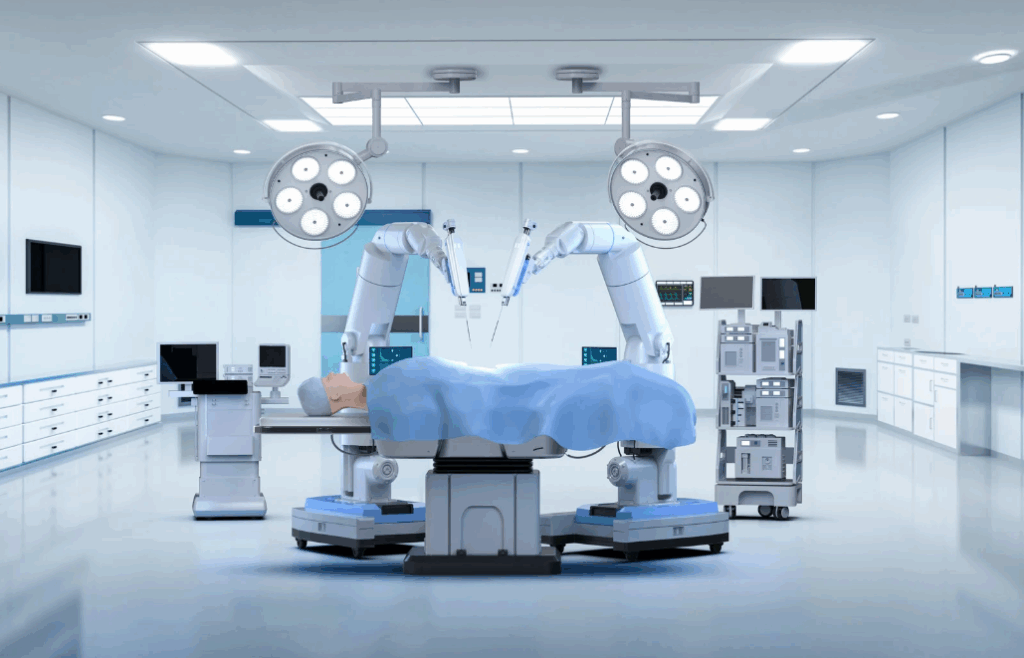
Impact on Diagnostic Equipment and Implants
Piezoelectric actuators are also improving diagnostic equipment and medical implants. In diagnostic equipment, they can be used to precisely position sensors and lenses, leading to clearer and more accurate images. In implants, they can be used to deliver drugs or stimulate tissues with great precision. The use of medical implants is growing rapidly.
Here’s a table showing some examples:
| Application | Benefit |
| Medical Imaging | Higher resolution, clearer images |
| Drug Delivery Implants | Precise and controlled drug release |
| Neural Implants | Targeted stimulation of neural tissue |
Aerospace and Defense Applications of Piezoelectric Actuators
Piezoelectric actuators are finding increased use in aerospace and defense because of their precision and reliability. They can handle tough conditions and offer fine control, which is super important in these fields. Let’s look at some specific ways they’re being used.
Adaptive Optics and Beam Steering
Adaptive optics systems correct distortions in light waves caused by the atmosphere. Piezoelectric actuators are used to adjust the shape of mirrors in real-time, improving the clarity of images from telescopes and laser beams. This is crucial for both astronomical observations and defense applications like laser communication and targeting. Think of it like wearing glasses for a telescope!
Precision Pointing and Tracking Systems
In aerospace and defense, accurately pointing and tracking objects is essential. Piezoelectric actuators enable extremely precise movements in these systems. For example, they can be used in satellite tracking systems to maintain a lock on a target or in missile guidance systems for accurate course correction. The precision offered by piezo disc actuators is unmatched by traditional actuators in these scenarios.
Active Vibration Control in Aerospace
Aircraft and spacecraft experience significant vibrations that can affect performance and lifespan. Piezoelectric actuators can be integrated into structures to actively dampen these vibrations. Sensors detect the vibrations, and the actuators generate counter-forces to cancel them out. This reduces stress on the structure, improves ride quality, and extends the life of the equipment. It’s like having a built-in shock absorber that actively responds to bumps.
The use of piezoelectric actuators in aerospace and defense is growing rapidly. Their small size, low power consumption, and high precision make them ideal for applications where space and weight are limited, and performance is critical. As technology advances, we can expect to see even more innovative uses for these actuators in these demanding fields.
Here’s a quick look at some key benefits:
- Improved accuracy in targeting systems
- Enhanced stability of optical instruments
- Reduced structural fatigue in aircraft
Designing and Developing Piezoelectric Actuators
Critical Material Selection and Properties
Picking the right material is super important when you’re making custom PZT actuators. It really makes or breaks how well the whole thing works. You’ve got to think about a bunch of stuff, like how much the material bends when you zap it with electricity (that’s the piezoelectric coefficient), how strong it is, and how it handles heat and moisture. Some materials are better at certain things than others. For example, lead zirconate titanate (PZT) is a popular choice because it’s got a high piezoelectric coefficient, but other materials like barium titanate or even polymers might be better if you need something that can handle extreme temperatures or is super flexible.
Here’s a quick rundown of some common materials:
| Material | Pros | Cons |
| Lead Zirconate Titanate (PZT) | High piezoelectric coefficient, widely used | Contains lead, can be brittle |
| Barium Titanate | Lead-free alternative, good piezoelectric properties | Lower piezoelectric coefficient compared to PZT |
| Quartz | Stable, low loss | Low piezoelectric coefficient, expensive |
| PVDF (Polymer) | Flexible, lightweight | Low piezoelectric coefficient, sensitive to temperature and humidity |
Optimizing Design for Specific Performance
Okay, so you’ve got your material picked out. Now comes the fun part: actually designing the actuator. This isn’t just slapping some stuff together; you’ve got to really think about what you want the actuator to do. Are you trying to move something a tiny bit with crazy precision, or do you need to push something with a lot of force? The shape and size of the actuator, how it’s put together, and even how you apply the electricity all play a big role.
Here are some things to keep in mind:
- Displacement: How far does it need to move?
- Force: How much force does it need to exert?
- Speed: How quickly does it need to respond?
- Size: How small does it need to be?
Getting the design right is a balancing act. You might need to tweak things a bunch of times to get the performance you’re after. It’s all about finding the sweet spot where everything works together perfectly.
Addressing Design Challenges and Limitations
Let’s be real, designing these things isn’t always a walk in the park. Piezoelectric actuators have some quirks. For one, they don’t move very far on their own. You often need to use clever tricks, like stacking them or using levers, to get more movement. They also need a lot of voltage to work, which can be a pain. And, they can be sensitive to temperature and humidity, which can mess with their performance. Plus, there’s this thing called hysteresis, where the actuator doesn’t move exactly the same amount each time you apply the same voltage. Dealing with all these challenges is part of the job. You might need to use special materials, fancy control systems, or just get creative with your design to overcome these limitations. For example, you might use a feedback loop to compensate for hysteresis or a temperature sensor to correct for temperature drift. These aerospace and defense sensors are very sensitive.
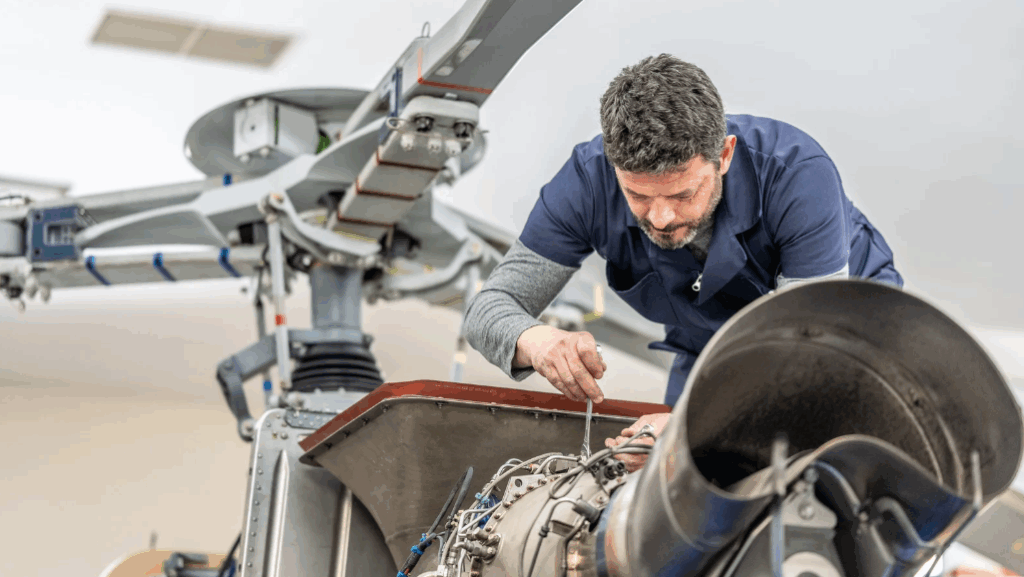
Future Trends in Piezoelectric Actuator Technology
It’s pretty wild to think about where piezoelectric transducer technology is headed. Right now, they’re already doing some amazing stuff, but the future looks even more promising. We’re talking about new materials, better control, and way more uses than we ever imagined.
Emerging Materials and Fabrication Techniques
Okay, so the materials they use now are good, but scientists are always looking for something better. Think stronger, more efficient, and maybe even flexible. New materials are constantly being developed. Here’s a quick look at some of the stuff in the pipeline:
- New Ceramics: Researchers are tweaking the formulas of existing ceramics to boost their piezoelectric properties. It’s all about getting that sweet spot of performance and stability.
- Polymer Composites: These are like the superheroes of the material world. They combine the best of both worlds – the flexibility of polymers with the power of piezoelectric ceramics. This opens up doors for actuators that can bend and twist in ways we couldn’t do before.
- Thin Films: Imagine actuators so thin they’re practically invisible. That’s the idea with thin films. They’re perfect for micro-devices and applications where space is super tight.
The push for better materials isn’t just about making things smaller or stronger. It’s also about making them more sustainable and cost-effective. That’s a win-win for everyone.
Integration with Advanced Control Systems
It’s not enough to just have a great actuator; you need a brain to control it. That’s where advanced control systems come in. We’re talking about things like:
- AI-Powered Control: Imagine an actuator that learns from its mistakes and adjusts its performance on the fly. That’s the power of AI. It can optimize things in real-time, making the whole system way more efficient.
- Closed-Loop Feedback: This is like having a GPS for your actuator. Sensors constantly monitor its position and make tiny adjustments to keep it on track. No more drifting or inaccuracies.
- Wireless Control: Who needs wires? Wireless control lets you operate actuators from a distance, which is super handy in remote or hard-to-reach places. Think about medical implants or industrial robots in hazardous environments.
Expanding Applications and Market Growth
Piezoelectric actuators are already popping up everywhere, but the future is even brighter. Here’s a taste of where they’re headed:
- Biomedical Engineering: From tiny drug delivery systems to advanced surgical tools, piezoelectric actuators are revolutionizing healthcare. They’re precise, reliable, and can be made small enough to fit inside the human body.
- Consumer Electronics: Remember those old phone buzzers? Well, piezoelectric actuators are taking over. They’re used in haptics (that’s fancy talk for touch feedback), speakers, and even energy harvesting devices.
- Aerospace: From controlling airplane wings to adjusting satellite mirrors, piezoelectric actuators are helping to make aircraft more efficient and spacecraft more precise. They’re lightweight, powerful, and can withstand extreme conditions. The aerospace applications are really taking off.
The market for piezoelectric actuators is expected to grow significantly in the coming years. This growth is driven by the increasing demand for precision motion control in a wide range of industries. As technology advances and costs come down, we’ll see even more innovative uses for these amazing devices.
The future of piezoelectric actuators looks really exciting, with new uses popping up all the time. These tiny, powerful devices are changing how many things work, from super-precise tools to everyday gadgets. Want to see how these amazing parts can help your projects? Check out our website to learn more!
Conclusion
So, we’ve gone through a lot about piezoelectric actuators. It’s pretty clear these little devices are a big deal for anything needing super accurate movement. From making sure tiny parts fit together just right in a factory to helping doctors with delicate surgeries, they really show up everywhere. They’re fast, use little power, and can be made pretty small. Sure, they have their quirks, like not moving a huge distance or needing specific power, but engineers are always working on making them better. As technology keeps moving forward, these actuators will definitely keep finding new and cool ways to help us out, making things more precise than ever before.
Frequently Asked Questions
What exactly is a piezoelectric actuator?
Piezoelectric actuators are special devices that use certain materials to change electricity into tiny, precise movements. Think of them like super-accurate little motors that can push or pull with great control.
Where are these actuators typically used?
They are amazing for jobs needing super tiny, exact movements. This includes things like making sure factory robots place parts perfectly, helping medical tools work with extreme care, or even adjusting mirrors in space telescopes.
What makes piezoelectric actuators so special?
Their biggest strengths are how incredibly precise they are, how quickly they can react, and their small size. They can make movements that are too small for the eye to see, and they do it almost instantly.
Do they have any downsides?
While they’re great, they can’t move very far, often need a lot of electricity, and can be sensitive to changes in heat or moisture. Also, sometimes their movement isn’t perfectly smooth, which is called ‘creep’ or ‘hysteresis’.
What’s next for piezoelectric actuator technology?
Scientists and engineers are always looking for new materials that work even better, finding ways to combine them with smart computer systems, and exploring new places to use them, from tiny sensors to big industrial machines.
Why are piezoelectric actuators becoming more important?
They’re becoming super important in modern tech because they allow for control at a level that traditional motors just can’t match. This opens doors for new inventions and makes existing machines much better at what they do.

